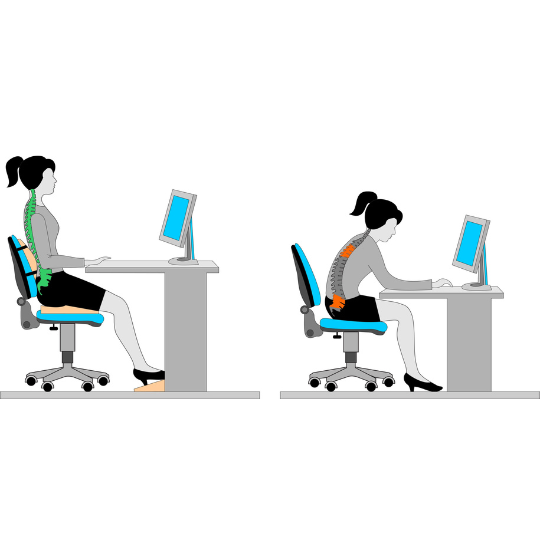Understanding Low Back Pain: Causes, Symptoms, Relief, and Prevention
admin

Understanding Low Back Pain: Causes, Symptoms, Relief, and Prevention
By Dr. Navendu N Jana
Low back pain is one of the most common health complaints across the globe — affecting nearly 8 out of 10 adults at some point in their lives. Whether you're sitting for prolonged hours at a desk, dealing with an old injury, or waking up with unexplained stiffness, low back pain can significantly affect your quality of life.
In this article, we’ll break down the causes, symptoms, diagnosis, and effective prevention strategies to help you take control of your back health.
What Happens in Your Lower Back?
The lower back, or lumbar spine, is a complex structure made up of:
Five vertebrae (L1–L5)
Intervertebral discs that act as cushions
Facet joints that allow flexibility
Muscles and ligaments for support and movement
Spinal cord and nerves, which can be pain-sensitive
Pain can originate from any of these structures. However, in most cases, the cause is termed non-specific low back pain — meaning no exact anatomical source is identified.
Common Sensations:
Dull or aching discomfort
Sharp or stabbing pain
Tightness or stiffness
Pain radiating into the legs (as in sciatica)
Common Causes of Low Back Pain
Most cases of back pain are mechanical or postural in origin. Here are the typical culprits:
Mechanical/Postural Causes (Majority of Cases)
Poor posture while sitting or working
Repetitive bending or lifting
Weak core muscles
Sedentary lifestyle
Inadequate mattress or footwear
Disc-Related Issues
Herniated disc pressing on nerves (→ sciatica)
Degenerative disc disease (DDD)
Joint Problems
Facet joint arthritis
Sacroiliac joint dysfunction
Muscle and Ligament Strain
Often caused by sudden twisting, heavy lifting, or improper exercise form.
Less Common but Serious Causes
Ankylosing spondylitis
Spinal stenosis
Fractures
Infections or tumors (rare, but important to rule out)
When to Seek Medical Help
Most low back pain resolves within 4–6 weeks. However, certain warning signs call for immediate evaluation.
Red Flags:
Pain lasting more than 6 weeks
Unexplained weight loss
Fever or history of cancer
Night pain that doesn’t improve with rest
Weakness or numbness in the legs
Loss of bowel or bladder control (may indicate cauda equina syndrome)
Yellow Flags (Risk for Chronic Pain):
Fear of movement (kinesiophobia)
Catastrophic thoughts (“I’ll never recover”)
Stress, anxiety, or depression
Mental health plays a crucial role in pain perception and recovery. Addressing psychological factors is key to long-term improvement.
Effective Relief Strategies: What Actually Works
The good news? Most people recover well with conservative management.
Activity Modification
Avoid prolonged bed rest
Gentle movement, such as walking, can be beneficial
Exercise Therapy
Stretching: Hamstrings, hip flexors, and lumbar muscles
Strengthening: Core exercises like bridges, bird-dog, and planks
Mobility drills: Pelvic tilts, cat-cow stretches
Postural Awareness
Sit upright with lumbar support
Take short breaks every 30–60 minutes
Physical Therapy
Supervised exercise programs
Spinal mobilization and stabilization exercises
Medications
Paracetamol or NSAIDs for short-term relief
Muscle relaxants (if spasms are present)
Avoid opioids unless absolutely necessary and under supervision
Mind-Body Techniques
Mindfulness-based stress reduction (MBSR)
Cognitive behavioral therapy (CBT) for chronic pain
Preventing Low Back Pain
Relief is only half the battle — long-term prevention is equally crucial.
Core Habits for a Healthy Spine:
Core strengthening: Pilates, yoga, or guided routines
Posture correction: Ergonomic workspace setup
Daily movement: Break long sitting with light stretches or walks
Proper lifting technique: Bend the knees, keep load close to the body
Healthy lifestyle:
Maintain ideal body weight
Quit smoking
Get adequate sleep
Manage stress effectively
And yes — a medium-firm mattress can make a real difference.
Do You Need an MRI or X-ray?
Contrary to popular belief, most people with back pain do not need imaging. Tests like MRI or X-ray are only advised if:
Pain persists beyond 6 weeks
You exhibit red flag symptoms
Neurological issues are present (e.g., numbness, weakness)
Many imaging reports show “abnormalities” like disc bulges that are common even in pain-free individuals. The focus should be on clinical symptoms — not just what scans show.
Final Takeaway
Low back pain is common, manageable, and rarely dangerous. With proper understanding and the right steps, you can effectively reduce pain and improve function — often without needing surgery or long-term medications.
Remember: movement, core strength, and good posture are your best friends.
If your symptoms persist or worsen, consult a medical professional for personalized care.








